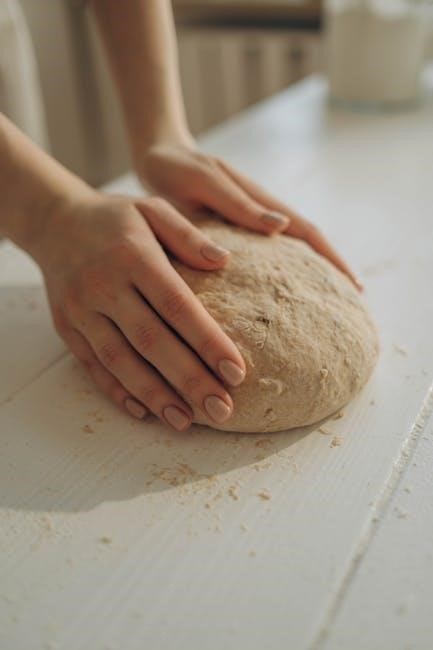Welcome to the Singer Simple Manual 2263, your comprehensive guide to understanding and operating the Singer Simple 2263 sewing machine. This manual is designed to help both beginners and experienced sewers unlock the machine’s full potential. Inside, you’ll discover detailed instructions, safety precautions, and tips to ensure optimal performance. Whether you’re sewing basic repairs or creating intricate projects, this manual will be your trusted companion.

1.1. Overview of the Singer Simple Manual 2263
The Singer Simple Manual 2263 is a detailed guide designed to help users master the Singer Simple 2263 sewing machine. This manual provides a comprehensive overview of the machine’s features, operation, and maintenance. It covers everything from basic setup to advanced techniques, ensuring users can make the most of their sewing experience. The manual is structured to be user-friendly, with clear instructions and troubleshooting tips. Whether you’re a beginner or an experienced sewer, this guide offers essential information to enhance your creativity and productivity with the Singer Simple 2263.
1.2. Importance of Reading the Manual
Reading the Singer Simple Manual 2263 is essential for understanding the machine’s features, proper usage, and maintenance. It provides clear instructions for setup, operation, and troubleshooting, ensuring you get the best results from your sewing projects. The manual also covers safety guidelines to prevent accidents and extend the machine’s lifespan. By familiarizing yourself with the manual, you’ll gain confidence in using the Singer Simple 2263 effectively; This guide is designed to help both beginners and experienced sewers maximize the machine’s potential, making it an invaluable resource for anyone looking to create, repair, or enhance their sewing skills.
1.3. Safety Precautions
Safety is paramount when using the Singer Simple Manual 2263 sewing machine. Always keep the machine out of children’s reach and ensure the work area is well-lit. Avoid touching hot surfaces, and never sew near flammable materials. Use the correct power supply voltage specified in the manual to prevent electrical hazards. Keep fingers away from moving parts, and handle needles and threads with care to avoid injuries. Regularly clean and maintain the machine to ensure smooth operation. Follow all maintenance instructions provided to prevent mechanical issues. By adhering to these precautions, you can enjoy safe and efficient sewing experiences with your Singer Simple 2263.
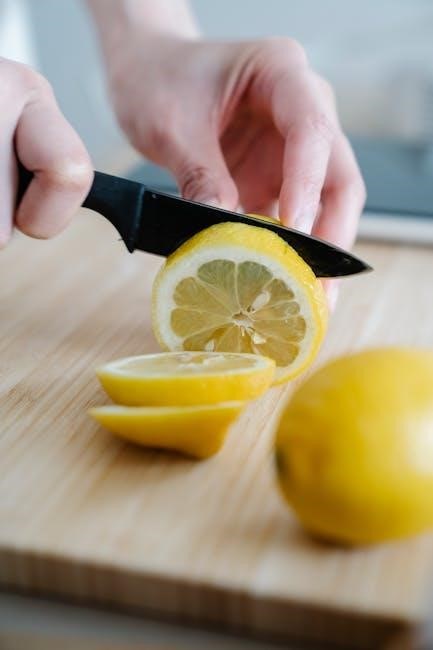
Features of the Singer Simple 2263 Sewing Machine
The Singer Simple 2263 sewing machine offers 23 built-in stitches, including basic, decorative, and stretch stitches. It features a compact, lightweight design for easy portability and storage. The machine includes various accessories like bobbins, needles, and a sewing foot, making it ready for immediate use. Its user-friendly interface and robust construction ensure reliable performance for both beginners and experienced sewers. The Singer Simple 2263 is an excellent choice for handling a variety of sewing tasks efficiently and creatively.
2.1. Built-in Stitches and Their Functions
The Singer Simple 2263 comes with 23 built-in stitches, offering versatility for various sewing projects. These include basic straight stitches for straight-line sewing, zigzag stitches for decorative edges, and stretch stitches for elastic fabrics. Decorative stitches add aesthetic value to projects, while reinforcement stitches ensure durability at seams. The machine also features an automatic backstitch function for secure starts and finishes. Each stitch type is designed to cater to different fabric types, from delicate cotton to thick denim, making it ideal for both everyday repairs and creative sewing endeavors. This variety ensures users can tackle a wide range of tasks with precision and ease.
2.2. Compact and Lightweight Design
The Singer Simple 2263 boasts a compact and lightweight design, making it easy to move and store. Weighing just 12.2 pounds, it is ideal for small sewing spaces or for those who need a portable machine. Despite its lightweight construction, the machine is durable and built to last, ensuring reliability for years of use. Its sleek design allows for easy placement on any sewing table or countertop, while its portability makes it perfect for sewing classes or projects on the go. This feature is particularly beneficial for beginners who may not have dedicated sewing areas or prefer a machine that is easy to handle.
2.3. Accessories Included
The Singer Simple 2263 comes with a variety of essential accessories to enhance your sewing experience. Included are an all-purpose foot, a zippered dust cover for storage, several bobbins, and a set of sharp needles. These accessories ensure you have everything needed to start sewing right away. The all-purpose foot is perfect for basic sewing tasks, while the bobbins and needles support versatility in fabric types and stitching. The dust cover protects the machine when not in use, maintaining its cleanliness and functionality. This comprehensive set of accessories makes the Singer Simple 2263 a great value for both beginners and experienced sewers.
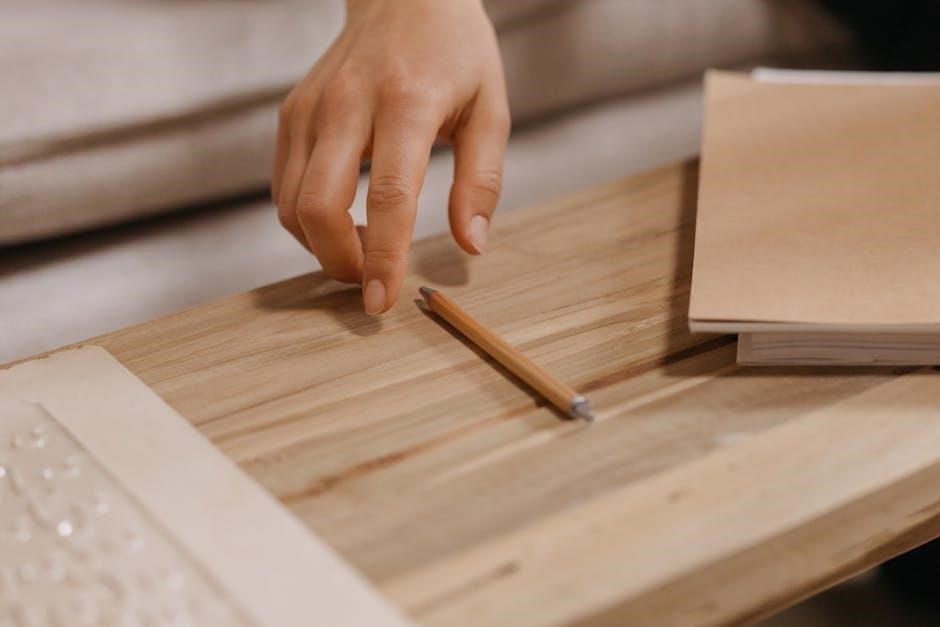
Setting Up the Singer Simple 2263
Setting up the Singer Simple 2263 is straightforward. Begin by unboxing and inspecting the machine, then place it on a stable surface. Plug it in, ensure all parts are securely assembled, and you’re ready to start sewing.
3.1. Unboxing and Initial Inspection
Start by carefully unboxing the Singer Simple 2263 sewing machine and inspecting its contents. Ensure all accessories, such as the power cord, needles, and presser feet, are included. Check the machine for any visible damage or defects. Familiarize yourself with the exterior controls and features, such as the stitch selector and tension dials. Locate the user manual, which provides detailed setup instructions. Before powering on, verify that all components are securely attached and ready for use. This initial inspection ensures a smooth setup process and helps you get acquainted with your new sewing machine.
3.2. Threading the Machine
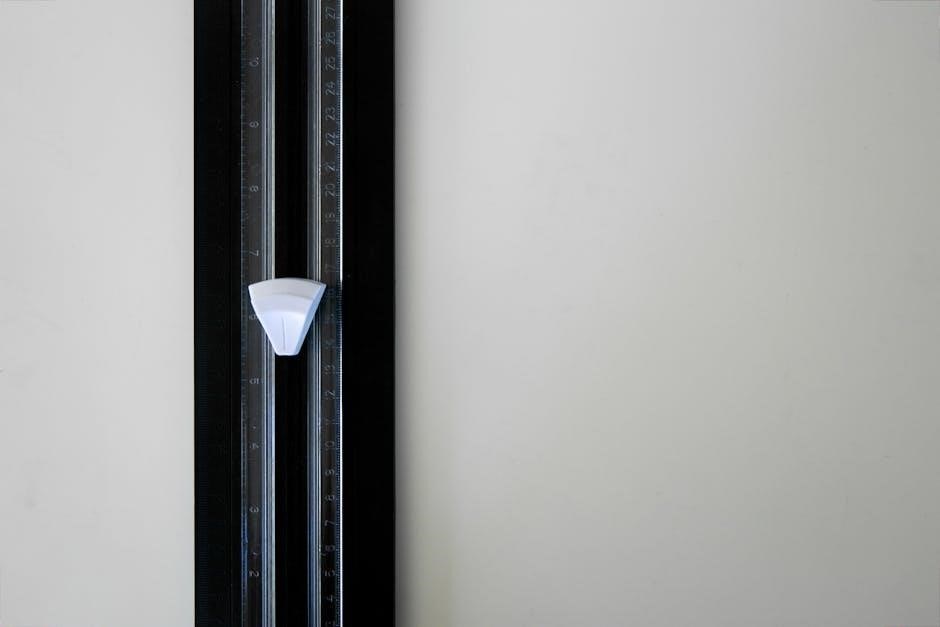
Threading the Singer Simple 2263 is straightforward. Begin by lifting the presser foot and locating the spool pin. Insert the thread through the tension disc, leaving a small loop. Gently pull the thread to seat it properly. Guide the thread through the take-up lever and then through the needle. Ensure the thread is taut but not overly tight. Refer to the manual for visual guidance. Proper threading is essential for smooth operation and consistent stitching. Always turn the handwheel to ensure the thread is correctly seated before starting your project. This step ensures your machine runs smoothly and your stitches are even. Follow the manual carefully for best results.
3.3. Understanding the Basic Parts
Familiarizing yourself with the Singer Simple 2263’s basic parts is essential for effective operation. Key components include the spool pin, tension discs, take-up lever, presser foot, and stitch selector. The spool pin holds the thread, while the tension discs regulate thread tightness. The take-up lever ensures proper thread flow, and the presser foot secures fabric during sewing. The stitch selector allows you to choose from various stitch options. Understanding these parts helps you troubleshoot issues and use the machine efficiently. Refer to the manual for visual guidance to locate and identify each part accurately, ensuring smooth and precise sewing operations.

Operating the Singer Simple 2263
Operating the Singer Simple 2263 is straightforward and intuitive. Start by selecting your desired stitch and adjusting settings as needed. Ensure the machine is properly threaded, then place fabric under the presser foot and begin sewing. Use the foot pedal to control speed, maintaining steady fabric movement for consistent results. Always follow safety guidelines and refer to the manual for troubleshooting tips to ensure optimal performance and longevity of your sewing machine.
4.1. Selecting the Right Stitch
Selecting the right stitch on the Singer Simple 2263 is essential for achieving professional results. The machine offers 23 built-in stitches, including basic, decorative, and stretch stitches. For general sewing, the straight stitch is ideal, while the zigzag stitch is perfect for stretchy fabrics. Decorative stitches add a creative touch to projects. Always refer to the stitch chart on the machine or in the manual to choose the correct stitch for your fabric type. Experiment with different stitches to enhance your sewing experience and ensure your projects look their best. Proper stitch selection ensures durability and a polished finish for any sewing task.
4.2. Basic Sewing Techniques
Mastering basic sewing techniques is crucial for successful projects with the Singer Simple 2263. Begin by threading the machine correctly and ensuring the bobbin is properly set. Place fabric under the needle, aligning edges evenly. Use the handwheel to guide the fabric smoothly. For straight lines, maintain steady pressure on the pedal and keep fabric taut. Backstitch at the beginning and end of seams for durability. Use the appropriate presser foot for different fabrics, such as the zigzag foot for stretchy materials. Practice on scrap fabric to refine your skills. These fundamental techniques will help you achieve professional-looking results and build confidence in your sewing abilities.
4.3. Customizing Stitch Length and Width
Customizing stitch length and width on the Singer Simple 2263 allows for tailored results. Use the stitch length dial to adjust between 0-4mm, suitable for delicate fabrics or heavy-duty sewing. The stitch width dial enables adjustments up to 5mm, ideal for decorative stitches or reinforcing seams. For stretch stitches, maintain a medium length and width to ensure flexibility. Experiment with different settings on scrap fabric to achieve desired results. Properly balancing these settings ensures even, professional-looking stitches. Refer to the manual for specific stitch customization guides, optimizing your sewing experience for various fabrics and projects.

Maintenance and Care
Regular maintenance ensures optimal performance. Clean the machine, oil moving parts, and store it properly. These steps prolong the life of your Singer Simple 2263.
5.1. Cleaning the Machine
Cleaning the Singer Simple 2263 is essential for maintaining its performance. Regularly remove lint and debris from the bobbin area and feed dogs. Use a soft brush or cloth to wipe down the exterior, avoiding harsh chemicals. Remove the needle plate and gently clean the hook race area to ensure smooth stitching. This routine prevents dust and thread fragments from building up and affecting the machine’s operation. Always unplug the machine before cleaning and refer to the manual for specific guidance. Proper maintenance ensures your Singer Simple 2263 runs efficiently for years to come.

5.2. Oiling the Machine
Regular oiling is essential to keep the Singer Simple 2263 running smoothly. Turn off and unplug the machine before oiling. Locate the oiling points, typically near the bobbin area and hook race. Use a few drops of high-quality sewing machine oil, applying it as directed in the manual. Excess oil can attract lint, so wipe it clean with a soft cloth. Oil the machine every 10 hours of use or as needed. Proper lubrication prevents friction, reduces noise, and extends the machine’s lifespan. Always use the recommended oil type to avoid damaging internal components. Regular maintenance ensures optimal performance and reliability.
5.3. Storage Tips
Proper storage is crucial for maintaining the Singer Simple 2263’s performance and longevity. After cleaning and oiling, store the machine in a dry, cool place away from direct sunlight and moisture. Use the provided dust cover or a breathable cloth to protect it from dust. Avoid extreme temperatures or humidity, as this can damage internal components. If storing for an extended period, ensure the machine is turned off and unplugged. Keep it upright to prevent oil from leaking or settling unevenly. Store accessories separately in a protective case to avoid loss or damage. Regularly inspect the machine before and after storage to ensure it remains in good condition.
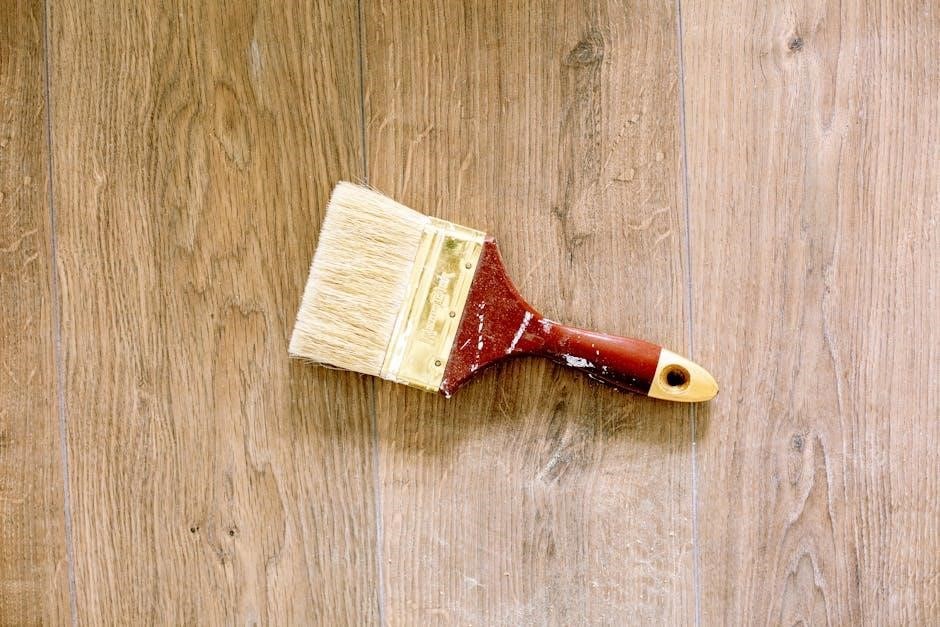
Troubleshooting Common Issues
Troubleshooting common issues with the Singer Simple 2263 involves addressing problems like the machine not turning on, thread breakage, and uneven stitches. Refer to the manual for solutions.
6.1. Machine Not Turning On
If the Singer Simple 2263 does not turn on, check the power source first. Ensure the machine is properly plugged into a working outlet. Verify that the power cord is undamaged and securely connected to both the machine and the electrical outlet. If using an extension cord, ensure it is functioning correctly. Also, check if the machine’s power switch is in the “on” position. If the issue persists, consult the manual for further troubleshooting steps or contact Singer customer support for assistance.
6.2. Thread Breakage
Thread breakage on the Singer Simple 2263 can occur due to improper threading, incorrect tension settings, or using low-quality thread. To resolve this, first, rethread the machine following the manual’s guidelines, ensuring the thread passes through all guides smoothly. Check the tension dials and adjust them to the recommended settings for your fabric type. If the issue persists, inspect the needle for damage or dullness and replace it if necessary. Additionally, clean the machine to remove any debris that might be causing friction. For further assistance, refer to the troubleshooting section in the manual or contact Singer support.
6.3. Uneven Stitches
Uneven stitches on the Singer Simple 2263 can result from incorrect tension settings, improper threading, or a dull needle. To fix this, ensure the thread is properly seated in the tension discs and guides. Check the stitch length and width settings, adjusting them as needed for your fabric type. A blunt or damaged needle can also cause uneven stitching, so replace it with a new one suitable for your material. Additionally, clean the machine’s feed dogs and bobbin area to ensure smooth fabric movement. If issues persist, consult the manual or contact Singer support for further troubleshooting assistance.

Advanced Techniques
Explore advanced sewing techniques with the Singer Simple 2263, such as creative use of decorative stitches, reverse sewing for professional finishes, and fabric-specific settings. Experiment with different materials and stitch combinations to enhance your projects and expand your sewing expertise.
7.1. Sewing Different Fabric Types
The Singer Simple 2263 accommodates various fabric types, from delicate silks to heavy canvases. For lightweight fabrics like cotton or linen, use the straight stitch or zigzag for secure seams. When working with stretchy fabrics, such as knits, the stretch stitches ensure flexibility. Adjust the tension and stitch length based on fabric thickness to prevent puckering or breaking. Use the appropriate presser foot and needle type for each fabric to achieve professional results. Always test settings on scrap fabric before starting your project to ensure optimal performance. This versatility makes the Singer Simple 2263 ideal for diverse sewing projects, catering to both beginners and experienced sewers.
7.2. Using Decorative Stitches
The Singer Simple 2263 offers a variety of decorative stitches to enhance your sewing projects. These stitches, such as the scallop or floral patterns, add a personalized touch to garments, home decor, or crafts. To use decorative stitches, select the desired stitch using the dial or button, depending on your machine’s model. Adjust the stitch width and length as needed for the fabric type. Use a contrasting thread color to make the stitches stand out. For intricate designs, consider using a walking foot or decorative presser foot. Experiment on scrap fabric first to ensure the stitch settings are optimal for your project. This feature allows you to create unique and artistic finishes easily.
7.3. Reverse Sewing
Reverse sewing is a essential feature on the Singer Simple 2263, allowing you to reinforce stitches at the beginning or end of a seam. To activate reverse sewing, locate the reverse lever or button on your machine. Pull or press it to sew in the opposite direction. This is particularly useful for securing fabric edges, preventing fraying, and adding durability to your projects. Always ensure the needle is in the highest position before reversing. Use a matching thread color for a seamless finish. Practice on scrap fabric to master the technique, ensuring smooth transitions between forward and reverse stitching. This feature is perfect for professional-looking hems and seams.
The Singer Simple Manual 2263 provides a comprehensive guide for mastering the Singer Simple 2263 sewing machine. With its user-friendly design and versatile features, this machine is perfect for both beginners and experienced sewers. By following the manual, you’ll unlock its full potential, ensuring smooth and professional results. Happy sewing!
8.1. Summary of Key Features
The Singer Simple 2263 boasts 23 built-in stitches, including basic, decorative, and stretch options, catering to various sewing needs. Its compact, lightweight design ensures easy portability and storage. Designed for both beginners and experienced sewers, the machine offers intuitive controls and a robust construction. The manual highlights its versatility, allowing users to tackle everyday repairs, crafts, and complex projects with ease. With built-in safety features and an affordable price, the Singer Simple 2263 is a practical choice for home sewing. Its comprehensive guide ensures users can maximize its potential, making it a valuable addition to any sewing setup.
8.2. Encouragement to Explore More
Now that you’ve mastered the basics, it’s time to explore the full potential of your Singer Simple 2263. Experiment with decorative stitches, try sewing different fabric types, and practice reverse sewing for professional finishes. The machine’s versatility allows you to tackle a wide range of projects, from simple repairs to intricate crafts. Don’t hesitate to push your creativity further—each stitch is an opportunity to learn and grow. With this manual as your guide, you’ll uncover new ways to express your creativity and bring your sewing ideas to life. Happy sewing!
8.3. Final Tips for Optimal Use
To ensure your Singer Simple 2263 operates at its best, always follow routine maintenance, such as cleaning and oiling. Regularly inspect and replace the needle to maintain stitch quality. Experiment with different fabric types and stitch settings to expand your sewing capabilities. Store the machine in a dry, cool place when not in use. Refer to the manual for troubleshooting common issues and explore creative projects to refine your skills. By adhering to these tips, you’ll extend the machine’s lifespan and enjoy a seamless sewing experience. Happy creating with your Singer Simple 2263!
